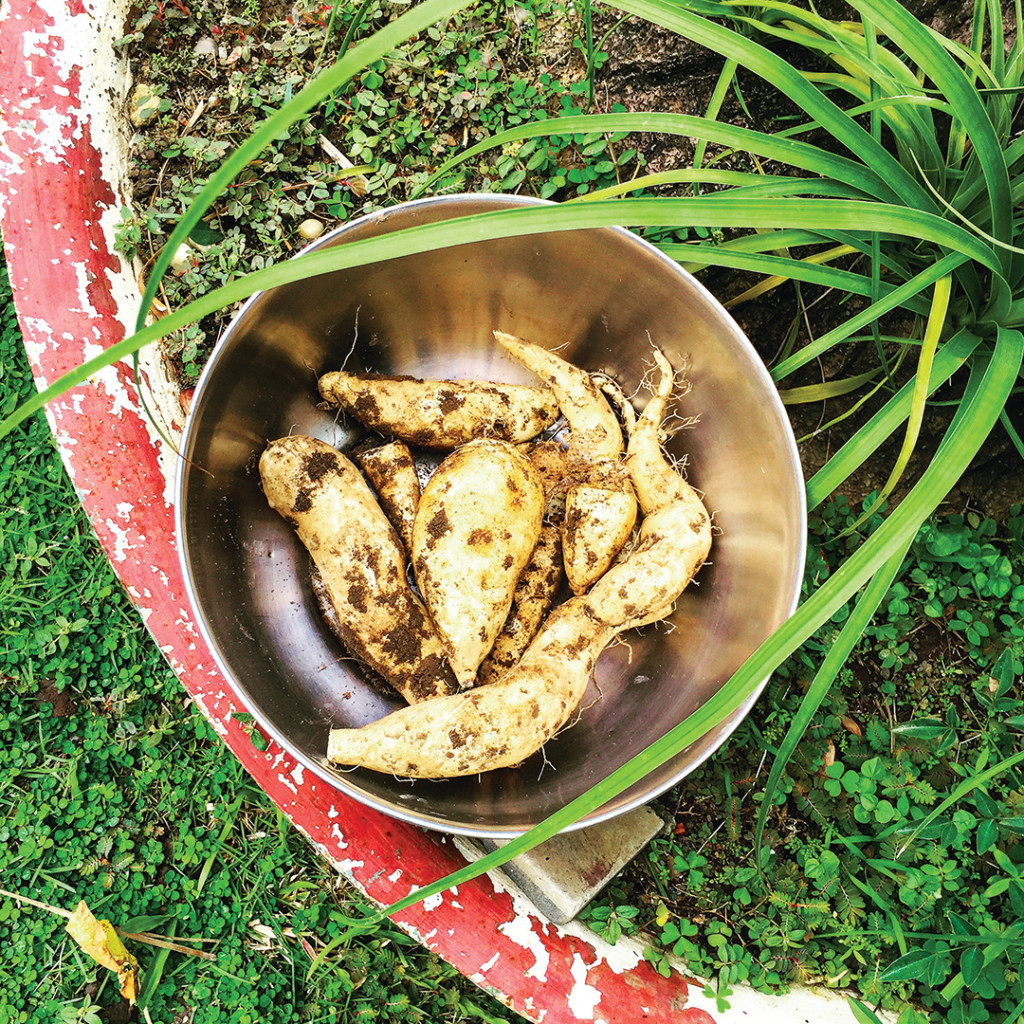Sweet Potatoes & Herbs
I’m no gardener and we don’t have a pretty garden. We’ve always liked the idea of growing our own food (and in the case of our organic virgin coconut oil, food and skincare 🙂 ) and have taken the same approach to it as we have our work — gleeful experimentation! Mango tree here, pomelo tree there…ooh why not try tomatoes…or corn! It’s more Jungle Book than Secret Garden but it’s so rewarding to get food from our back yard! Bonus: kid-popular non-digital play alternative. Those are my two creatures at “harvest.” Bonus-bonus: kids learn that food grows (it isn’t “born” in a box or bottle), that natural food isn’t supposed to be manicured-pretty, and they learn what food tastes like when it’s less or unprocessed.
A recent triumph: SWEET POTATOES.
There are thousands of varieties that grow easily in different weather and soil conditions. They play well with others (the photo below shows our ripening sweet potatoes leaves next to lemongrass.)
They work for so many recipes: from healthier (they are packed with antioxidants and fiber) french fries to mashes and sweet treats…and I just learned that the tops are fab in salads and soups! All this makes them perfect for most gardens. They’re not bad-looking plants either (corn is a…commitment).
Another super easy grow: HERBS.
We use fresh herbs in most of our cooking and salads now. And in something I’m particularly proud of — drinks!
I can’t stress enough how important garnishes are to a cocktail. In the best gins (I come from a long line of gin lovers), different garnishes change the drink completely, bringing out wildly different notes. I’ve even discovered that lavender does lovely things to certain espressos!
From an apartment windowsill, to a garden or local urban farm, getting food as close to the source as possible means a few pretty wonderful things:
- Less preservatives: foods need preservation to survive long transport and days on shelves.
- Less processing: most foods need some processing for consumption (even simple slicing or peeling is a type of processing). But the more processing (more chopping and dicing, heat, added chemicals), the more antioxidants, phytochemicals and other good stuff is lost. If it’s grown, picked, put in a canvas bag and brought home, that’s already a lot less than the processing that happens with truckloads of harvests and food preparation.
- Healthier foods: see above…less processing equals better retention of the food’s inherent antioxidants, vitamins and nutrients. No hydrogenation is needed for longer preservation either (hydrogenation results in trans fats). And less additives — many of which are ingredients that our bodies cannot process or process well — in general, too.
- Fun family activity: whether the kids are doing the actual gardening or just helping you shop at a local farm or market, the sights and smells are an adventure in themselves, and it’s the perfect opportunity to learn more about nature, food and health.












